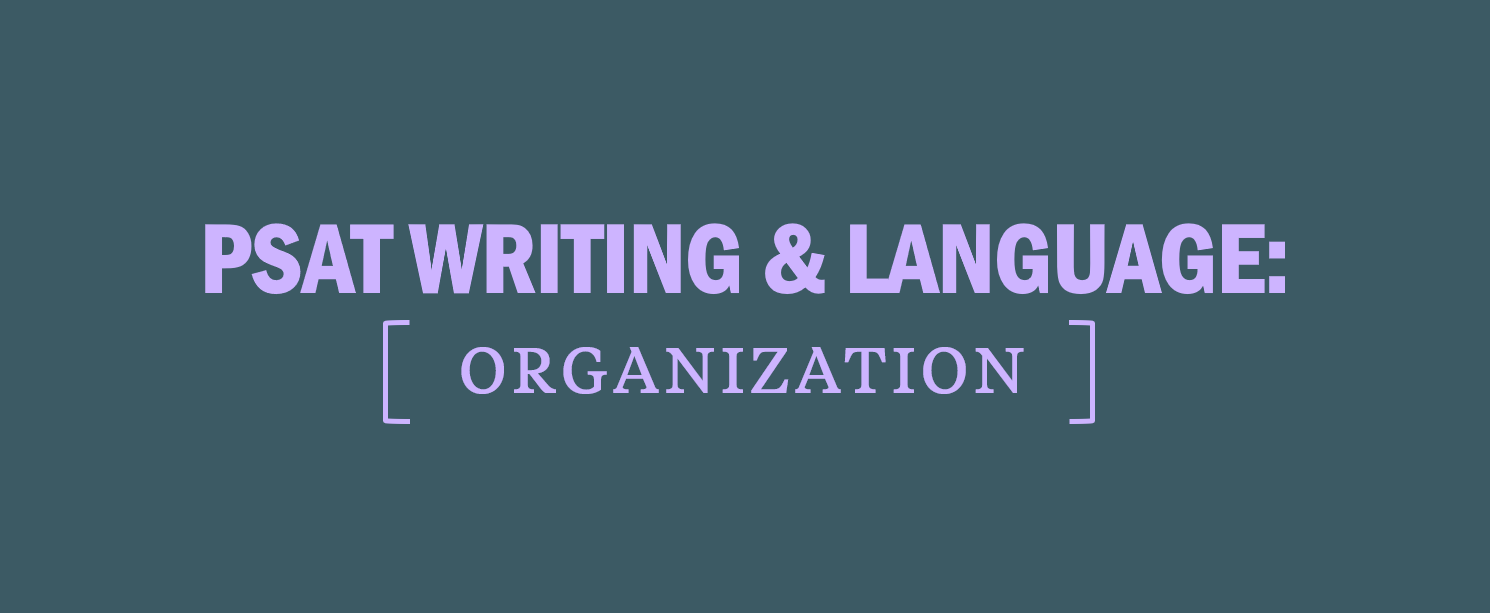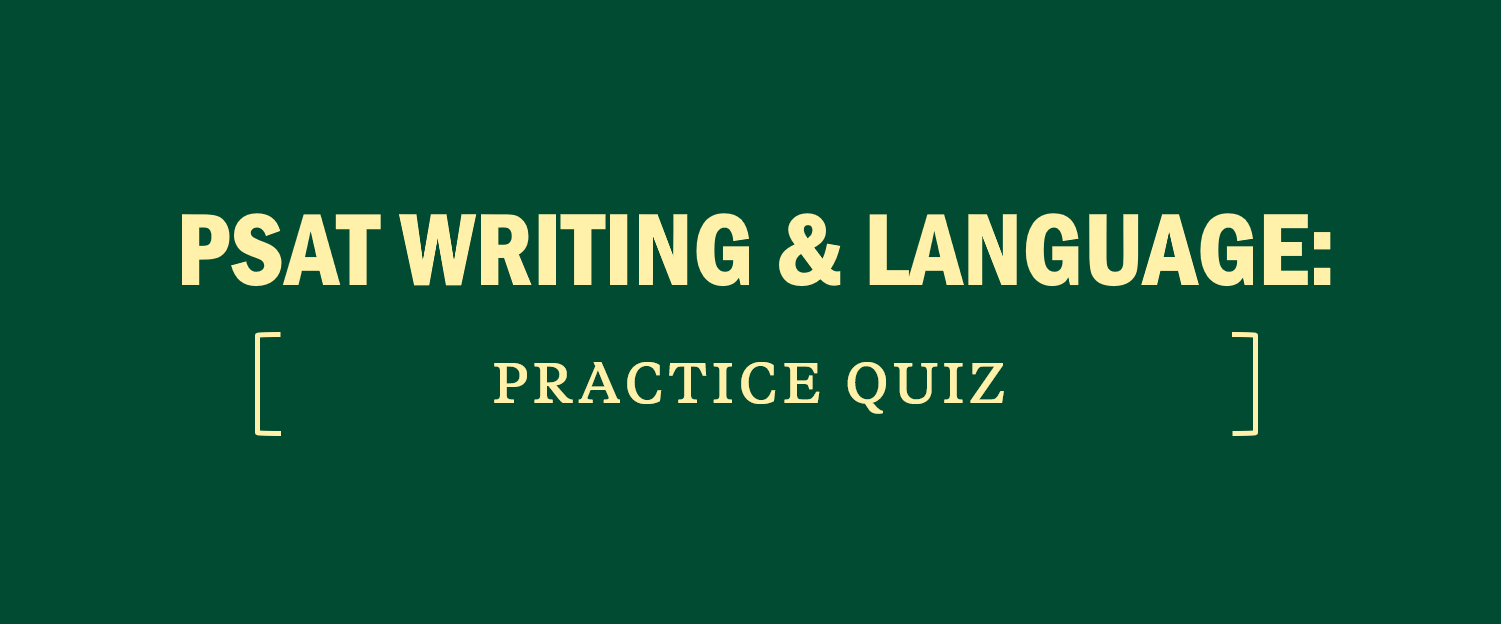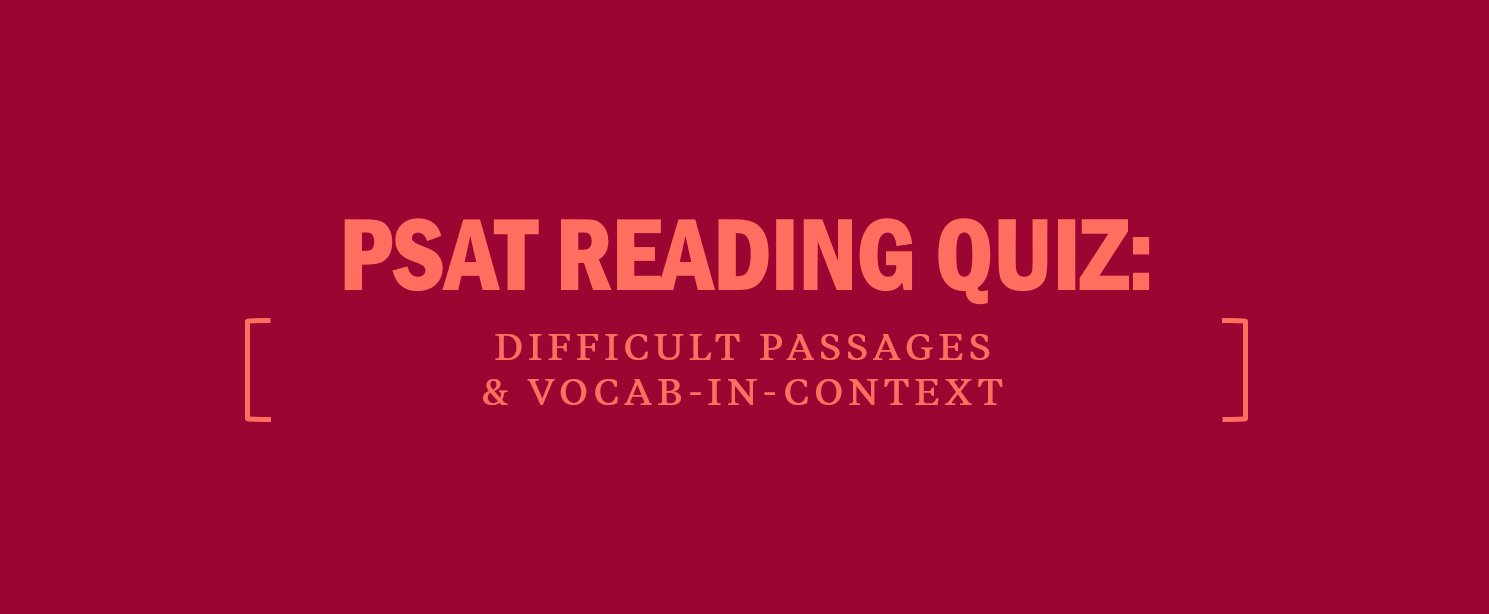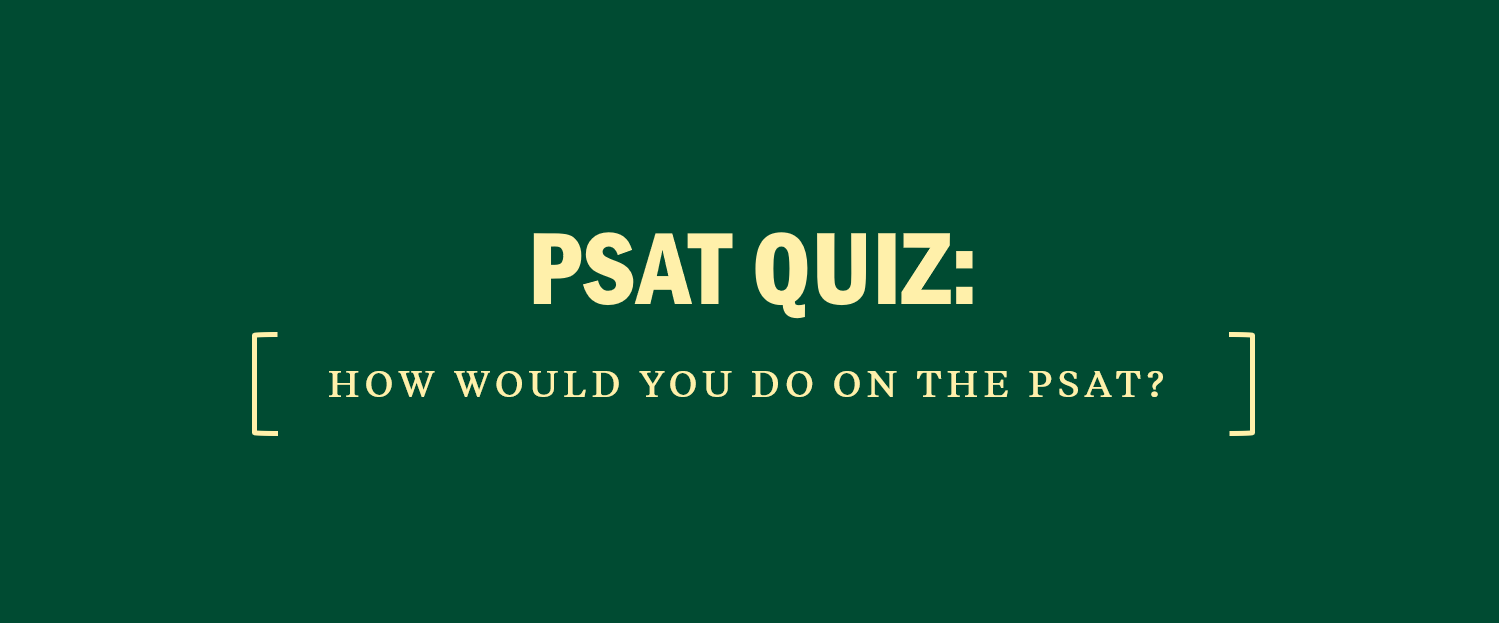PSAT Writing and Language: Organization
Organization questions on the PSAT require you to assess the logic and coherence of a Writing & Language passage. These questions differ in scope; you might be asked to organize the writing at the level of the sentence, the paragraph, or even the entire passage.
There are two kinds of PSAT Organization questions:
Contrast Transitions
- although
- but
- despite
- even though
- however
- in contrast
- nonetheless
- on the other hand
- rather than
- though
- unlike
- while
- yet
Cause-and-Effect Transitions
- as a result
- because
- consequently
- since
- so
- therefore
- thus
Continuation Transitions
Providing an example:
- for example
- for instance
Showing emphasis:
- certainly
- in fact
- indeed
- that is
Showing a parallel relationship:
- also
- furthermore
- in addition
- and
- moreover
Remember!
Organization questions require you not only to improve grammar and style but also to ensure that these elements accurately express the author’s logic and reasoning.
Let’s look at the following Writing & Language passage and questions. After the passage, there are two columns. The left column contains test-like questions. The column on the right features the strategic thinking a test expert employs when approaching the passage and questions presented.
Sample PSAT Writing and Language Question 1
Step 1: Read the passage and identify the issue
- Is a transition underlined? What is it? Yes, “Indeed” is part of the underlined portion.
- What kind of transition is “indeed”? A continuation transition that shows emphasis
- What does the author write before the transition? That “such a system could only be considered for small communities . . .”
- What does the author write after the transition? That the objection is “moot,” or not debatable
- Is “indeed” an accurate transition? What kind of transition is necessary here? No, it should be a contrast transition.
Step 2: Eliminate answer choices that do not address the issue
- What answer choice(s) can you eliminate and why? Eliminate (A) because the transition is incorrect as is. Eliminate (B) because “since” also indicates continuation. Eliminate (D) because it eliminates the transition.
Step 3: Choose the best answer
- Plug in the remaining answer choices and select the most correct, concise, and relevant one
- What is the answer? Choice (C)
Sample PSAT Writing and Language Question 2
Step 1: Read the passage and identify the issue
- What is the issue? Sentence 3 is not properly placed within the paragraph.
- What is sentence 3 about? How scientists tested a theory
Step 2: Eliminate answer choices that do not address the issue
- What answer choice(s) can you eliminate? Eliminate (A) because sentence 3’s location is incorrect as is. Eliminate (B) because the sentence is not a proper introduction to the paragraph. Eliminate (D) because sentence 4 describes the results of the experiment testing the theory.
Step 3: Choose the best answer
- Plug in the remaining answer choices and select the most correct, concise, and relevant one
- What is the answer? Choice (C)
Sample PSAT Writing and Language Question 3
Step 1: Read the passage and identify the issue
- What kind of word is underlined? A transition word
- What kind of transition is it? Cause and effect
- Is the transition appropriate given the context of the sentence? No, there’s no particular relationship between the two parts of the sentence.
Step 2: Eliminate answer choices that do not address the issue
- What answer choice(s) can you eliminate? Eliminate (A) because the underlined portion is incorrect as written. “Despite” is a contrast transition, which also doesn’t make sense in context, so eliminate (C). Eliminate (D) because the word “Before” creates a past-to-present transition that doesn’t exist in the sentence.
Step 3: Choose the best answer
- Plug in the remaining answer choices and select the most correct, concise, and relevant one
- What is the answer? Choice (B)
PSAT Writing and Language Practice Question Explanations
Question 1
When a transition is underlined, make sure it correctly connects the ideas on either side of it. The underlined transition, “Indeed,” shows continuation and emphasis, but the two ideas it separates are contrasting. Therefore, a contrast transition is needed. Choice (C) accomplishes this.
Question 2
When reordering a sentence within a paragraph, pay attention to how the sentence begins so you can figure out what it should logically follow. The sentence in question begins with the phrase “To test this theory.” Therefore, sentence 3 must follow a sentence that states a theory. Sentence 1 states what “some psychologists . . . believe,” so the correct answer is (C).
Question 3
Introductions to sentences with multiple clauses should accurately set up the relationship between those clauses. The sentence to which the underlined portion of the text belongs conveys that the narrator specialized in a specific period when he was studying ancient history. Therefore, the sentence’s two clauses occupy the same period of time. Choice (B) accurately expresses this contemporaneous relationship.
Previous: PSAT Writing and Language: Infographics
Next: PSAT Writing and Language: Sentence Structure







